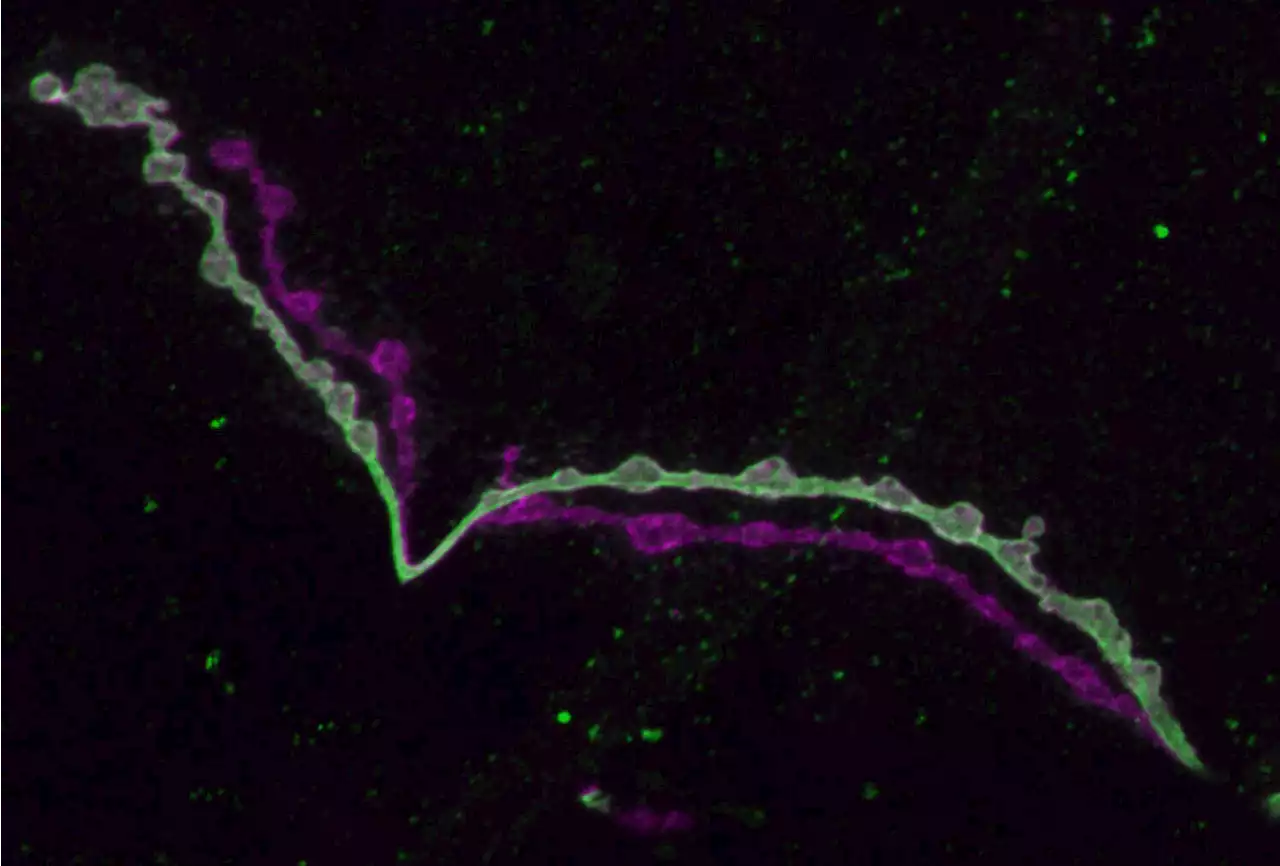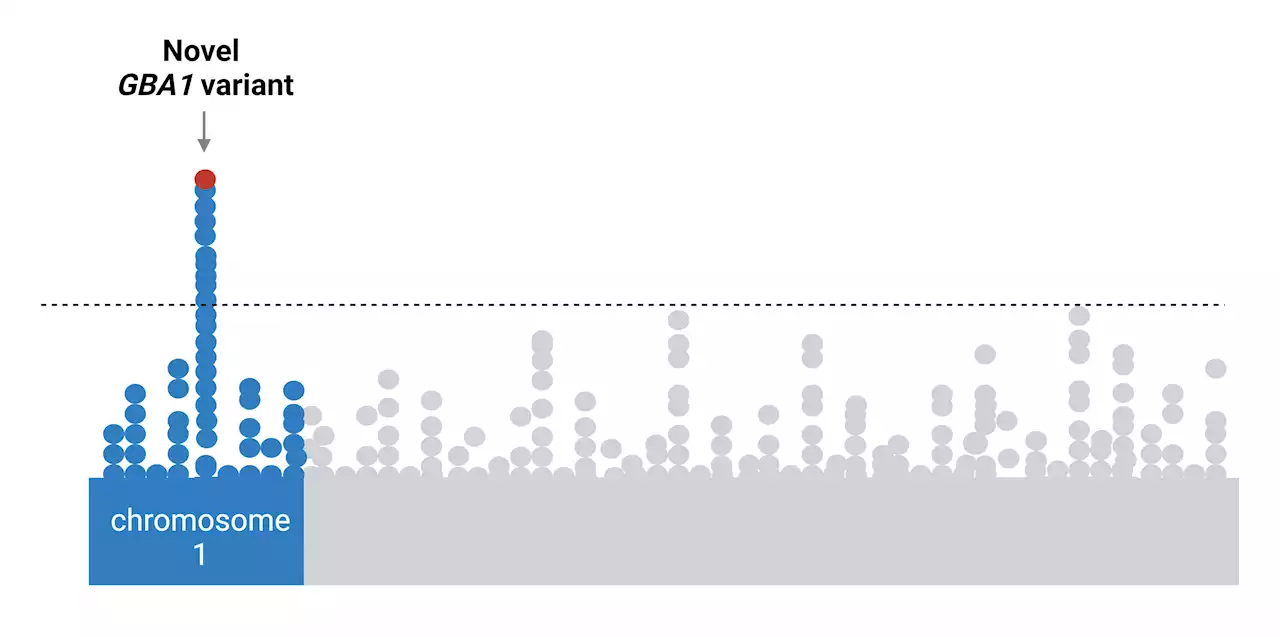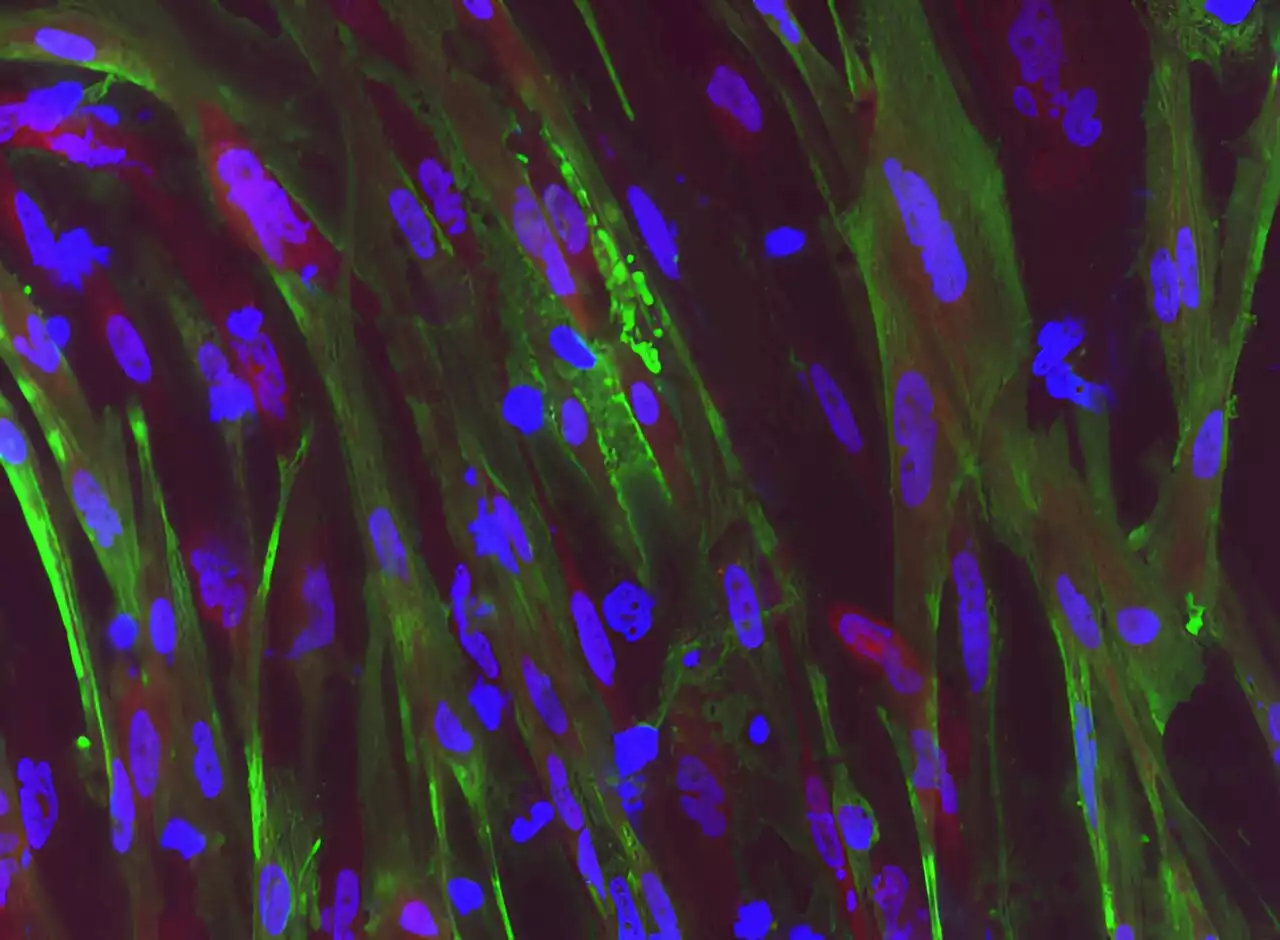Duchenne muscular dystrophy (DMD) is a muscle degeneration disorder caused by mutations affecting the dystrophin gene. On August 24 in the journal Stem Cell Reports, researchers show how a dual CRISPR RNA method restored dystrophin protein function in induced pluripotent stem cells derived from DMD patients.
This photo shows green dystrophin protein restored by dual-Cas3 in skeletal muscle derived from DMD patient iPSCs. Credit: Akitsu Hotta
The approach worked by removing large sections of the dystrophin gene, allowing the cells to skip faulty or misaligned sections of the genetic code. This yields truncated but still functional proteins for a wide variety of mutation patterns associated with DMD. Due to significant variations in the mutation patterns affecting the dystrophin gene, deleting a small section of the gene can only be used for a limited number of DMD patients. For example, the most common mono-exon skipping of exons 51, 53, and 45 can be applied to 13%, 8%, and 8% of DMD patients, respectively.
To overcome this hurdle, Hotta and his team used CRISPR-Cas3 to induce a deletion of up to 340 kilobases at the dystrophin exon 45-55 region in various DMD mutation patterns. Because it was rare to observe a deletion of more than a hundred kilobases using a single CRISPR RNA—which helps to locate the correct segment of DNA—the researchers used a pair of CRISPR RNAs inwardly sandwiching the target genomic region.
Danmark Seneste Nyt, Danmark Overskrifter
Similar News:Du kan også læse nyheder, der ligner denne, som vi har indsamlet fra andre nyhedskilder.
 New study sheds light on the molecular mechanisms underlying SLC29A3 disordersIn humans, the SLC29A3 gene regulates the function of lysosomes to control waste recycling in cells such as macrophages (that engulf and destroy foreign bodies). This gene encodes for the lysosomal protein that transport nucleosides—degradation products of RNA and DNA—from lysosomes to the cytoplasm. Loss-of-function mutations in the SLC29A3 gene lead to aberrant nucleoside storage, resulting in a spectrum of conditions called SLC29A3 disorders.
New study sheds light on the molecular mechanisms underlying SLC29A3 disordersIn humans, the SLC29A3 gene regulates the function of lysosomes to control waste recycling in cells such as macrophages (that engulf and destroy foreign bodies). This gene encodes for the lysosomal protein that transport nucleosides—degradation products of RNA and DNA—from lysosomes to the cytoplasm. Loss-of-function mutations in the SLC29A3 gene lead to aberrant nucleoside storage, resulting in a spectrum of conditions called SLC29A3 disorders.
Læs mere »
 Study connects neural gene expression differences to functional distinctionsFiguring out how hundreds of different kinds of brain cells develop from their unique expression of thousands of genes promises to not only advance understanding of how the brain works in health, but also what goes wrong in disease. A new MIT study that precisely probes this 'molecular logic' in two neuron types of the Drosophila fruit fly, shows that even similar cells push and pull many levers to develop distinct functions.
Study connects neural gene expression differences to functional distinctionsFiguring out how hundreds of different kinds of brain cells develop from their unique expression of thousands of genes promises to not only advance understanding of how the brain works in health, but also what goes wrong in disease. A new MIT study that precisely probes this 'molecular logic' in two neuron types of the Drosophila fruit fly, shows that even similar cells push and pull many levers to develop distinct functions.
Læs mere »
 New gene variant linked to Parkinson's disease found in people of African ancestryA gene variant found almost exclusively in the genomes of people of African ancestry increases the risk of developing Parkinson's disease, according to an international study of nearly 198,000 participants with this genetic background.
New gene variant linked to Parkinson's disease found in people of African ancestryA gene variant found almost exclusively in the genomes of people of African ancestry increases the risk of developing Parkinson's disease, according to an international study of nearly 198,000 participants with this genetic background.
Læs mere »
 Naked mole rat gene boosts health and longevity in miceIn a groundbreaking endeavor, researchers at the University of Rochester have successfully transferred a longevity gene from naked mole rats to mice, resulting in improved health and an extension of the mouse's lifespan.
Naked mole rat gene boosts health and longevity in miceIn a groundbreaking endeavor, researchers at the University of Rochester have successfully transferred a longevity gene from naked mole rats to mice, resulting in improved health and an extension of the mouse's lifespan.
Læs mere »
 Parkinson's disease gene variant found in some people of African ancestryA gene variant found almost exclusively in the genomes of people of African ancestry increases the risk of developing Parkinson's disease, according to an international study of nearly 198,000 participants with this genetic background. Published in The Lancet Neurology, the study results suggest the risk may be linked to a variant in the gene encoding β-glucocerebrosidase (GBA1), a protein known to control how cells in the body recycle proteins.
Parkinson's disease gene variant found in some people of African ancestryA gene variant found almost exclusively in the genomes of people of African ancestry increases the risk of developing Parkinson's disease, according to an international study of nearly 198,000 participants with this genetic background. Published in The Lancet Neurology, the study results suggest the risk may be linked to a variant in the gene encoding β-glucocerebrosidase (GBA1), a protein known to control how cells in the body recycle proteins.
Læs mere »
 Waters launches XBridge Premier GTx BEH SEC columns for gene therapy applicationsWaters Corporation introduced the first in a new line of size exclusion chromatography (SEC) columns aimed at improving the analysis while lowering the cost of gene therapies, specifically adeno-associated viral (AAV) vectors.
Waters launches XBridge Premier GTx BEH SEC columns for gene therapy applicationsWaters Corporation introduced the first in a new line of size exclusion chromatography (SEC) columns aimed at improving the analysis while lowering the cost of gene therapies, specifically adeno-associated viral (AAV) vectors.
Læs mere »
